The number of patients with osteochondrosis increases each year, and the disease is irrepressibly young - a few decades ago, this problem mainly concerned the elderly, but now it is often felt even for those who are not even 30 years old.And one of its most common forms is osteochondrosis of the greenbary, the maximum load which launches the degenerative processes in the Green and the Interverbales which have maximum discs.In addition to the constant pain that interferes with normal life, osteochondrosis without opportune medical care is heavy with serious complications, which means that it is very important to recognize its first signs in time and to start the fight against it.
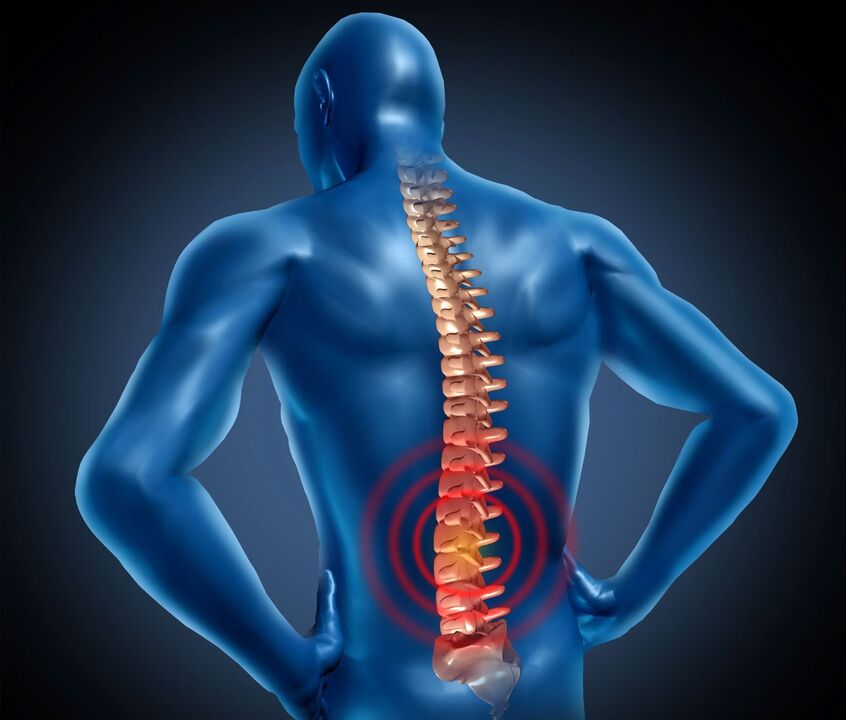
Where does osteochondrosis come from
The question is far from simple because there are many factors capable of causing this disease.It can be both the physiological characteristics of the body and an unhealthy lifestyle, a diet or even a genetically posed program.In general, among the main reasons for the development of osteochondrosis in the lumbar region, we can distinguish:
- Incorrect load distribution on the spine (incorrect posture, poor quality mattress or office chair, etc.);
- sedentary lifestyle;
- frequent constraints;
- unhealthy habits;
- A lean dietetics, leading to a deficiency in vitamins and the necessary trace elements;
- hypothermia;
- Pathology of the structure of the musculoskeletal system, for example, the curvature of the spine, flat feet, etc.;
- overweight;
- Metabolism violation;
- spine injuries;
- transferred infectious diseases;
- chronic inflammatory processes, mainly associated with joint diseases;
- Genetic predisposition.
The risk group also includes people whose professional activities are associated with important charges, for example, athletes and those who must be in the same pose for a long time: teachers, office employees, drivers, servers, hairdressers, etc.
In addition, osteochondrosis often becomes the result of other diseases, for example, disorders in the liver or gastrointestinal tract (in around 30% of patients), the heart, as well as the inflammation of ovaries in women and prostatitis in men.In this case, existing pathologies cause muscle and vascular cramps, causing oxygen famine and dystrophic changes.Consequently, the tissues that form the vertebrae and the intervertebral discs, suffering from a lack of nutrition, are gradually destroyed - osteochondrosis in the lumbar region is developing.
Symptoms of the disease
On what signs can be recognized in an osteochondrosis of the lumbar column, and is it realistic to do so until the disease is gaining momentum?Unfortunately, in the early stages, this disease in many cases takes place almost asymptomatic, and a slight discomfort in the back occurring from time to time is most often radiated to normal fatigue.It is its main danger - although osteochondrosis can always face without consequences, it is difficult to detect, and when the problem becomes obvious, it is much more difficult to slow down pathological processes.
The most important sign of this pathology is a serious pain in the lower back, often spreading throughout the back, buttocks and legs.In the early stages, it is mainly painful or drawn, and only occurs after physical effort or sudden movements.Over time, periods of relative lull, when the patient does not feel pain and discomfort, becomes shorter and that the sensations are gradually unpleasant in the lower back are transformed into his permanent companions.In addition, there are exacerbations, when the pain becomes intense and clear, and even the most insignificant charge can cause an attack, up to cough or sneezing.
There are additional signs of lumbar osteochondosis:
- Rigidity of movements;
- decrease in sensitivity and tingling in the legs;
- violation of perspiration;
- muscle weakness;
- Dry and peel the skin.
In the last stages, patients can have difficulties with control of urination and defecation due to the pinch of the spinal cord, and male patients have erectile dysfunction.
Lumbar osteochondrosis degree
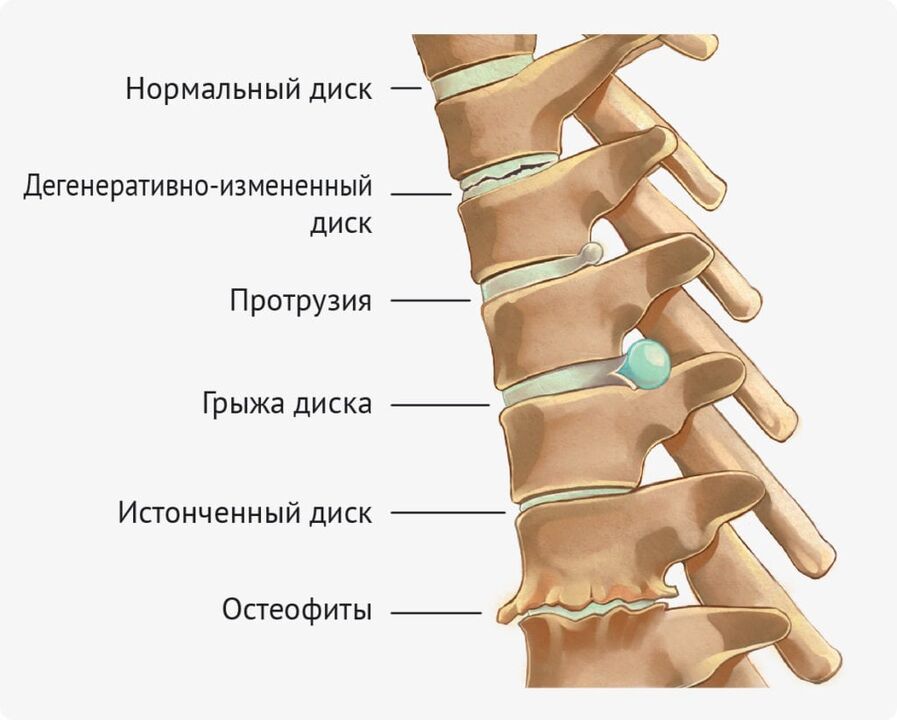
In total, 4 main stages in the development of the disease are distinguished.For 1, the deformation of the intervertebral discs is weakly expressed - these are small cracks inside the fibrous ring, which cause unpleasant sensations.1st degree osteochondrosis is characterized by paroxysmal pain, which only occurs with net movements and lifting weights.We are talking about Lumbago, that is to say bastards in the lower back in response to an attempt to modify the uncomfortable position of the body.In addition, at 1 stage of the disease, patients often suffer from muscle cramps and swelling.
Lumbar osteochondosis of the 2nd degree begins with low back pain - pain and discomfort increase and appear regularly, and to improve well, it is not enough to go to bed a little and relax.The process of destroying the fibrous ring continues and the vertebrae themselves acquire unhealthy mobility - the distance between them decreases and the nerve endings are pinched.Consequently, the patient has intense pain, as well as an alternative sensation of heat and cold, increased perspiration and numbness of the skin.
Step 3 of osteochondrosis is the training period of intervertebral hernies.The fibrous ring breaks and the contents of the nucleus, pushing the vessels and the nerve roots, falls.At the same time, the patient is tormented by acute pain that pursues him almost without interruption.Periodically, in the affected area, sensitivity decreases or disappears completely, and in other cases, on the contrary, it can increase painfully and accompanied by a tingling and burning sensation.At this stage of osteochondrosis, even a non -specialist can notice the deformation of the spine - the patients develop the curvature of the spine as a function of the type of lordosis, cyphosis or scoliosis.
The 4th degree of the disease is most serious - the spine is very distorted, patients suffer from constant pain and any movement for them turns into a real problem.This is due to the almost complete destruction of the intervertebral discs, as a result of which the vertebrae are converged as much as possible or even in contact with each other.In this case, the compression of the spinal cord can cause paralysis of the lower limbs.If you do not start treatment in time, going to the 4th stage, osteochondrosis is capable of making a person with a disabled person for the rest of their life.
Diagnosis of osteochondrosis
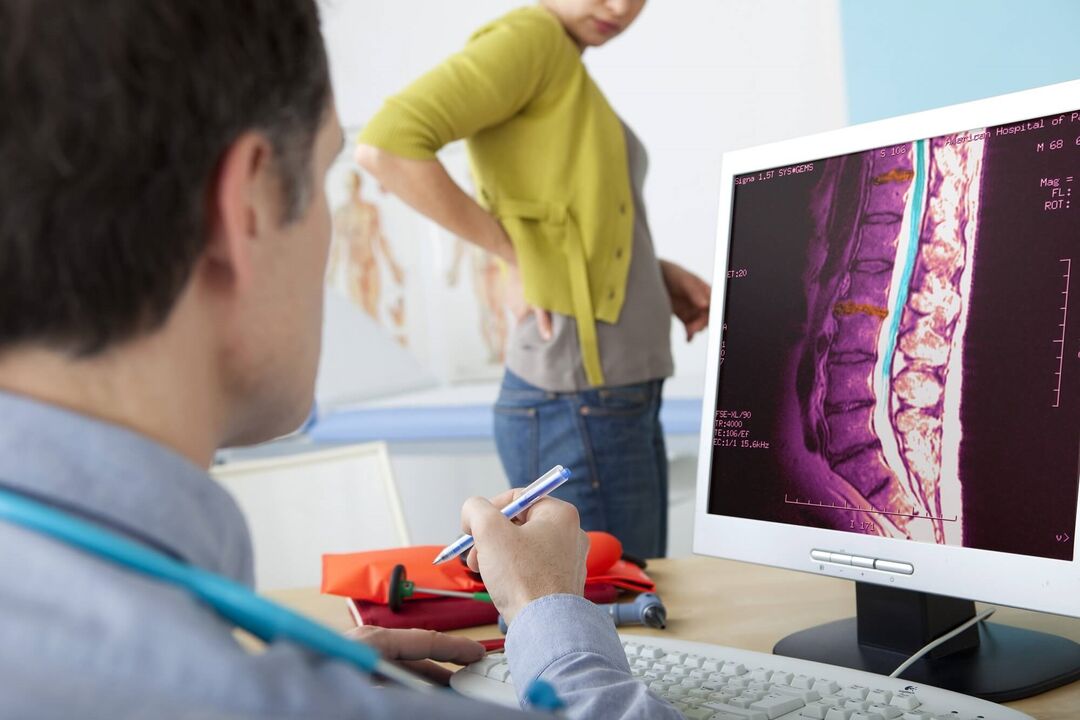
With lower back pain, most patients go to advise the therapist first, which, in the event of appropriate symptoms, sends them for a more in -depth examination to a neurologist.He, in turn, performs an inspection, collects an anamnesis and prescribed material studies to establish a precise diagnosis and determine the degree of negligence of the disease.
During the anamnesis collection, the specialist's main task is to discover the nature of the unpleasant sensations, their location, its intensity and its duration, and to understand how often the exacerbations of the disease occur, which, as a rule, precedes, and what measures bring to the patient.In addition, to make a diagnosis, the patient's lifestyle, their usual diet, the characteristics of professional activity, injuries and existing diseases, including hereditary, are important.
The inspection allows you to assess the patient's motor capacities (posture, approach, volume of movements), the presence of tone and muscle cramps, as well as to determine the level of sensitivity in the affected area.
However, you can only get a complete image with the help of material research: radiography, CT and MRI.X-ray allows you to see violations of the structures of the spine, to assess the state of intervertebral discs and in time to recognize the tendency to reduce the light between the vertebrae.The CT scan in this case is more informative - it allows you to literally look inside the spine and to study existing pathologies.And the MRI, in turn, gives exhaustive information on the state of the spinal cord, nerve endings, muscles and blood vessels, which is extremely important not only to make the diagnosis of "lumbar osteochondosis", but also to determine the degree of negligence of the disease.
Treatment methods
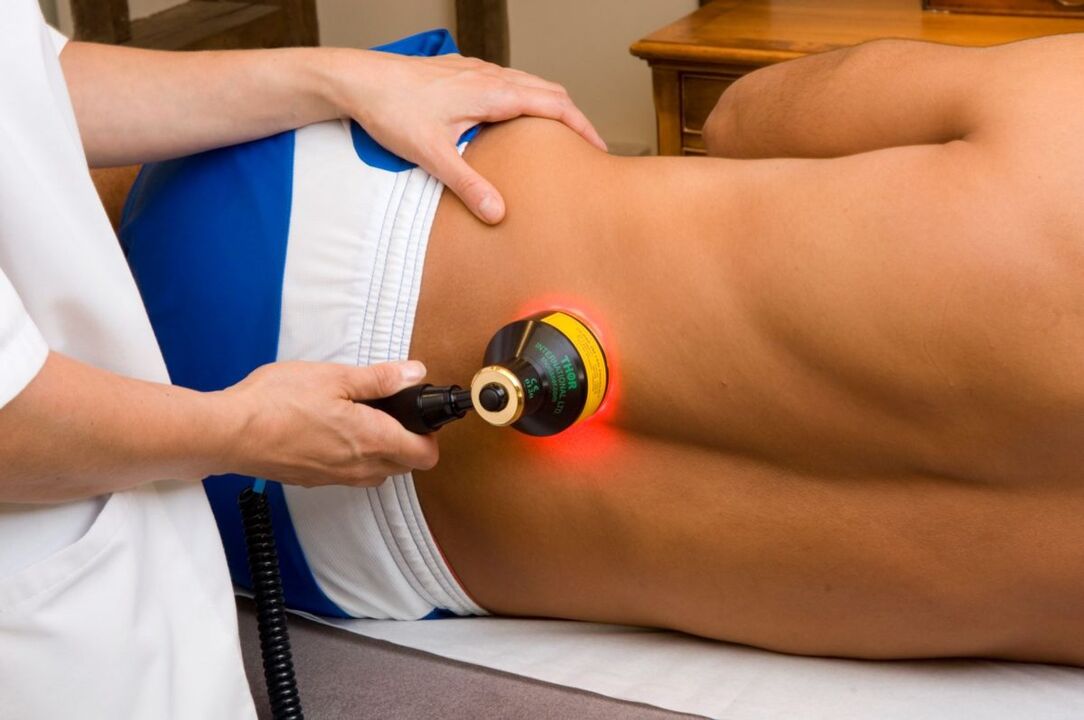
In order to successfully deal with lumbar osteochondosis, patients need complex therapy, including necessarily drug treatment, physiotherapeutic procedures, special gymnastics, massage, as well as the use of traditional medicine recipes that improve the effect of the use of traditional methods.
The priority task that must be resolved by starting the treatment of lumbar osteochondosis is the relief of pain syndrome, because during the exacerbation of the disease, many therapeutic methods, such as physiotherapy and exercise therapy cannot be used.To this end, patients are prescribed analgesics and injections, as well as non-steroidal anti-inflammatory drugs.It is the latter which is the main component of the drug treatment of osteochondosis - they face not only its symptoms, but also affect the causes that cause their appearance.In the most difficult cases, glucocorticosteroids are used to combat the inflammatory process, which are most often introduced directly into deep tissues in the damage area as well as novocaine or lidocaine.
In addition, patients with osteochondrosis need preparations to eliminate muscle spasms - anticonvulsants and muscle relaxing, chondroprotctors that restore damaged cartilaginous tissues and group B vitamins that strengthen body protection functions and reduce inflammation.
After painting pain, physiotherapeutic procedures come to the foreground in the treatment of osteochondrosis.We are talking about the use of laser therapy, magnetotherapy, ultrasound, electrophoresis, acupuncture, mud baths, paraffin applications, etc., which effectively take care of discomfort and pain and fix the result obtained from taking medication.
An important place in the fight against osteochondrosis in the lumbar region is diverted with physiotherapy exercises - subject to regular execution, the sets of exercises specially designed for such a case improves the patient's state considerably, making it almost entirely of freedom of movement.And professional massage will help consolidate the successes that perfectly reach muscle cramps.Non-traditional medicine, which provides osteochondrosis, plays an undeteited role in this case, not only effective in fighting this disease, but also safer than many synthetic drugs.
Why is lumbar osteochondosis dangerous?
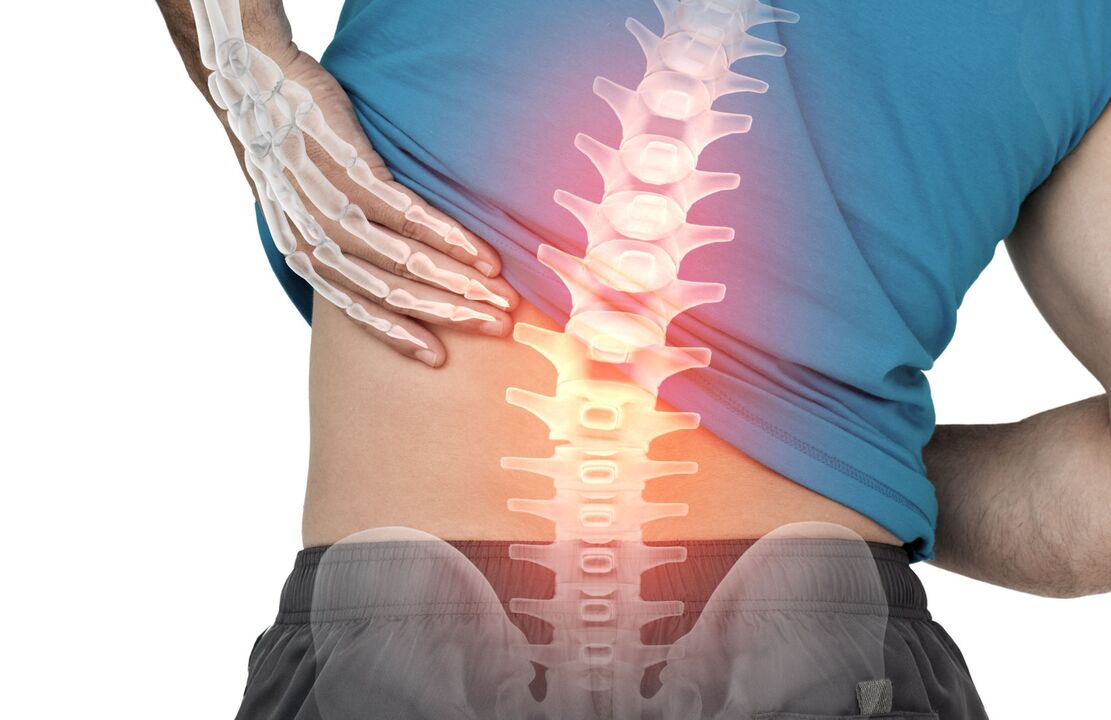
In addition to intensive pain, which often makes the life of a patient with really unbearable lumbar osteochondosis, people with such diagnosis are limited by motor capacities, and in the last stages of the disease, some of them can be completely lost.We are talking about the paralysis of the lower limbs, which can develop following the compression of the spinal cord.In the most extreme case, osteochondrosis is able to lead even to death if there are significant damage to the shell of the spinal cord.
But without even reaching 4 stages, lumbar osteochondosis seriously undermines human health.Often, it ends with the formation of intervertebral hernies, requiring prolonged and complex treatment, and in some cases, surgery.In addition, compression of blood vessels, characteristic of osteochondrosis, can lead to the formation of dangerous stagnation and violate the work of other internal organs.In patients with such a diagnosis, the genitorerinary system often suffers - lumbar osteochondosis is capable of causing problems with ovaries, uterus and appendages in women and erectile dysfunction in men.
It is obvious that over time to recognize the symptoms of osteochondrosis, to ask for help and to start its complex treatment - the task is extremely important.But the role of prevention is no less important in this case - it is with its help that you can reduce the risk of developing the disease and maintaining good health.We are talking about regular, but moderate physical effort, of a healthy lifestyle, a balanced diet, compliance with the alcohol consumption diet and specialist exams that can identify possible problems in the first stages.
It should be remembered that osteochondrosis in the lumbar region is a serious disease, which is extremely dangerous for health to ignore the symptoms.It is only by recognizing the disease over time and starting treatment, you can slow down pathological processes and make the patient to lead the opportunity to lead the usual lifestyle.Otherwise, the consequences could be the most deplorable, until the patient will no longer be able to get rid of.

























